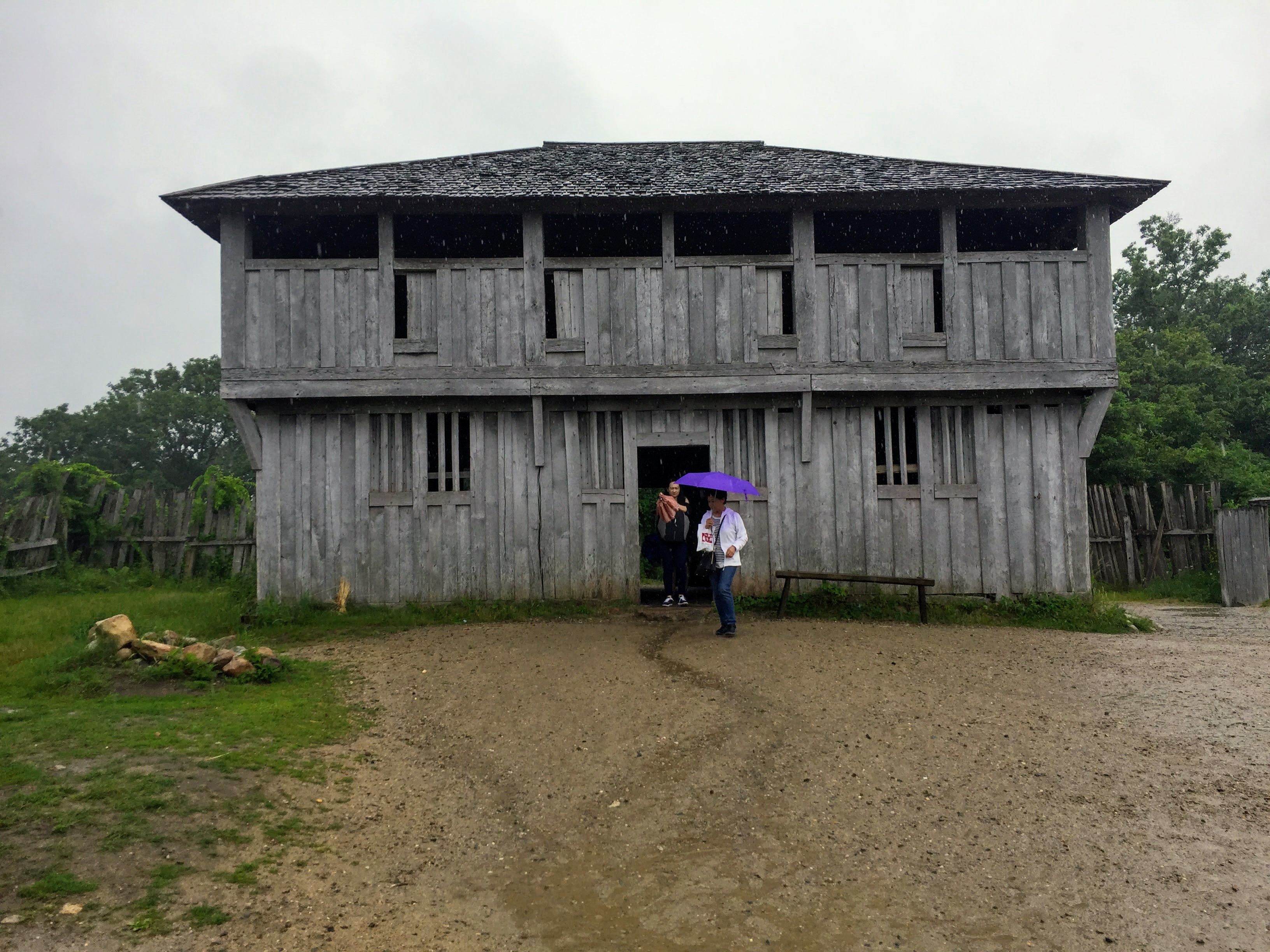We spent just one night at Fort Bridger, and we move today to Montpelier, Idaho. This will be a three state day: Lunch in Wyoming, Dinner in Utah, and sleep in Idaho.
We began again with the ever-changing Wyoming landscape…

We are headed to the Fossil Butte National Monument.

These bluffs are the shoreline of an ancient inland sea… The fossils we will be seeing are all sourced from here…

We proceeded to the Visitors Center

We were not the first to arrive…


Inside is a nice collection of fossils found nearby. There was also a good video showing how the fossils are found and extracted… Also, there was a man uncovering fossils as we watched…
We saw a crocodile…

A palm frond…

And a turtle…

We discovered that many rocks contain lots of Carbon…

In fact, note the Calcium Carbonate shown here; you will see mention of it later in this blog…

More views of the bluffs…


We headed out and shortly found a fuel stop and an opportunity for lunch…


More Wyoming landscape…


And then we entered Idaho!

We parked the Villa at the RV park, and headed over to the National Oregon/California Trail Center…

We had a guided tour of the exhibits depicting life on the trails, from getting prepared and buying provisions to actual travel down the trails…
There was an entire gallery of artworks prepared by a local husband and wife team…

We heard descriptions of the wagon, and contents (1,200 – 1,500 lbs. of food), and life on the trails…

We saw a typical supply store where anything you wanted could be purchased…



Then we heard some tall tails after we spent a few minutes inside a simulated wagon ride…

After the museum we headed south to Utah for dinner… We soon found ourselves on the shores of Bear Lake.
Bear Lake is a natural freshwater lake on the Idaho–Utah border. About 109 square miles in size, it is split about equally between the two states. The lake has been called the “Caribbean of the Rockies” for its unique turquoise-blue color, which is due to the refraction of calcium carbonate (limestone) deposits suspended in the lake. Limestone! I told you I would mention it again! Its water properties have led to the evolution of several unique species of fauna that occur only within the lake. Bear Lake is over 250,000 years old. It was formed by fault subsidence that continues today, slowly deepening the lake along the eastern side. In 1911 the majority of the flow of the Bear River was diverted into Bear Lake via Mud Lake and a canal from Stewart Dam, ending 11,000 years of separation between the lake and that river system.
Today the lake is a popular destination for tourists and sports enthusiasts, and the surrounding valley has gained a reputation for having high-quality raspberries.
Unfortunately, due to smoke from fires in Oregon, the air is very hazy, obscuring the mountains across the lake…


On our way to Bear lake we passed a marvelous Mormon Tabernacle in the town of Paris, ID.


We stopped for a little refreshment before dinner at Coopers, a restaurant at a golf course in Fish Haven, ID


At the appointer hour we arrived at the Bear Trapper, in Garden City, UT…

All the Airstreamers are here!








Garden City is a vacation area tourist place, much like the coast of Maine, Cape Cod, and the Wisconsin Dells. Lots of ice cream and fast food places that are absolutely overrun with tourists out for a good time. The traffic was terrible…


Boaters are everywhere…

And late on a Saturday afternoon in August the line to bring your boat trailer in to take your boat out of the water was hours long…


We returned to the Villa in time to see the sun set into the smoke…
An enjoyable time was had by all…



























 He has his patter down, much like a magician; he was a great performer, swinging these red-hot rods around like a baton twirler. It was really fun to watch. He asked the group (about 20 spectators) if he should make a vase or a wine glass. The immediate answer (me) was “wine glass”.
He has his patter down, much like a magician; he was a great performer, swinging these red-hot rods around like a baton twirler. It was really fun to watch. He asked the group (about 20 spectators) if he should make a vase or a wine glass. The immediate answer (me) was “wine glass”.





